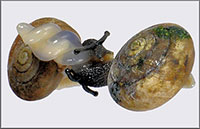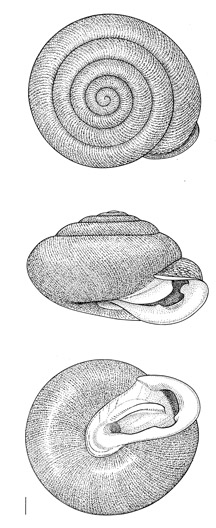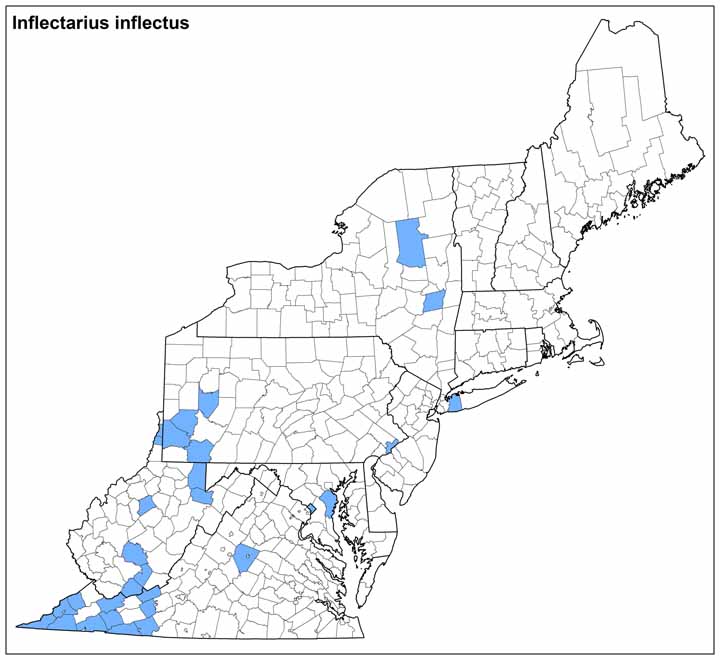Land Snails

.jpg)

Photo(s): Inflectarius inflectus mating pair © Bill Frank. Shell, showing a slightly more open aperture than I. rugeli, © Larry Watrous.
Illustrations © Kathy Schmidt from her series "Land Snails of New York State".
Click photo(s) to enlarge.
Inflectarius inflectus (Say, 1821)
Family: Polygyridae
Common name: Shagreen
Identification
Width: 9.5- 12.0 mm
Height: 5.0- 7.5 mm
Whorls: 4+
The shell of Inflectarius inflectus is depressed and imperforate. Its outer lip is reflected, creating a gutter behind it on the final whorl. It has three teeth in the aperture, a long parietal tooth, a short, blunt and slightly recessed palatal tooth, and narrow basal tooth. The shell is a bit larger and the basal tooth is more visible than in its congener I. rugeli.
Ecology
Inflectarius inflectus can be found in many habitats. Look for it under leaf litter, logs and rocks in wooded areas, under railroad ties, on roadsides, in gardens and even under trash in urban areas (Hubricht, 1985). In Tennessee, it has been associated particularly with wet soils of higher acidity (Coney et al, 1982) although a wider analysis found no preference in soil base status for this species (Nekola, 2010).
Taxonomy
Inflectarius inflectus has also been known as Helix clausa, H. inflecta, H. (Triodopsis) inflexa, Mesodon inflectus, Polygyra inflecta, P. i. var. media, P. herberti, Triodopsis inflecta, and Xolotrema clausa.
Distribution
This widespread central and southern US snail ranges from southern Michigan, as far west as Oklahoma and Texas, and as far south as Louisiana and Florida. In Virginia it is found only in the western counties. Some range-edge museum records, for upstate New York especially, need verification.
Conservation
NatureServe Global Rank: G5
NatureServe State Rank: Pennsylvania, S2, Imperiled; Maryland, unranked; New York, unranked; Virginia, S3, Vulnerable; West Virginia, SNR, unranked.
Ken Hotopp, Meegan Winslow 8/2012
Range Map (click to enlarge)


